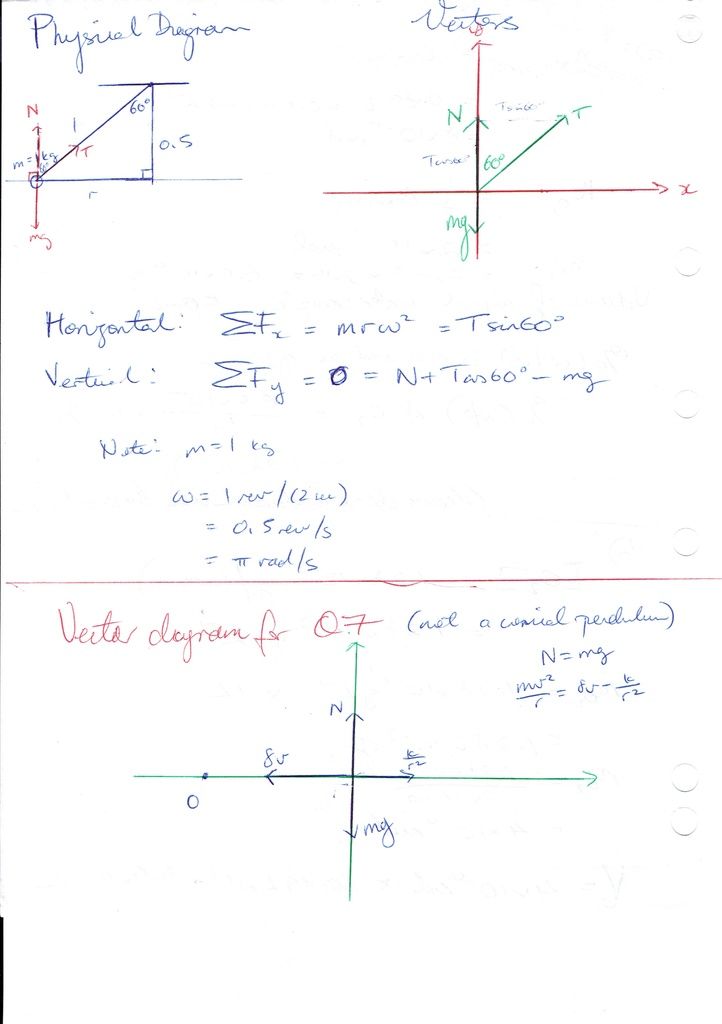Can i have a quick rundown of the conical pendulum?
Im not sure where normal (reaction force) comes in?
is the upward force(opposite mg) always (N+Tcosα) for ques like 4
For these questions you need to analyse where the forces actually are.
Note that a normal reaction only exists if the particle is touching a surface. If the particle is suspended in the air then this force is non-existent.
The normal reaction force is always
perpendicular to the edge of the surface.Always draw a vector diagram. Going by memory can lead to massive consequences.

However as you can see, if you resolved the vectors correctly for THIS question, you do have N + T cos 60
o = mg
Does this vector diagram make sense to you? If yes, then to do the question just correctly substitute your values. (Note that r = sqrt(3)/2 from trigonometry)
Also, for Q7, period is related to angular velocity by the relationship Period = 2π/ω
Q7 is not a conical pendulum question. It's just your ordinary (however really weird) circular motion question.

